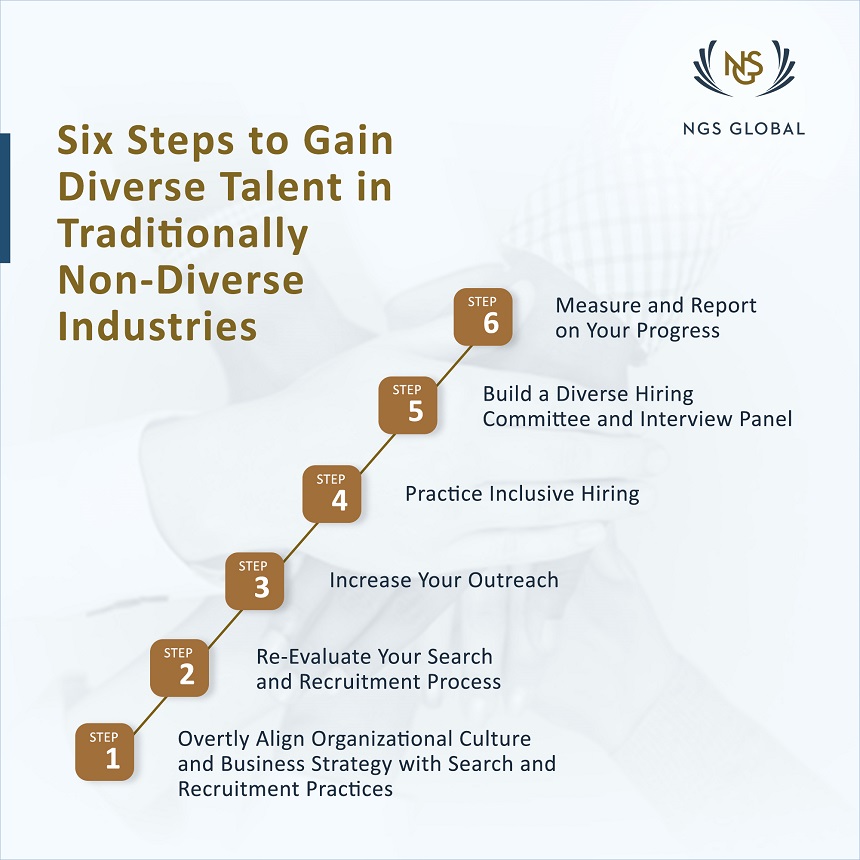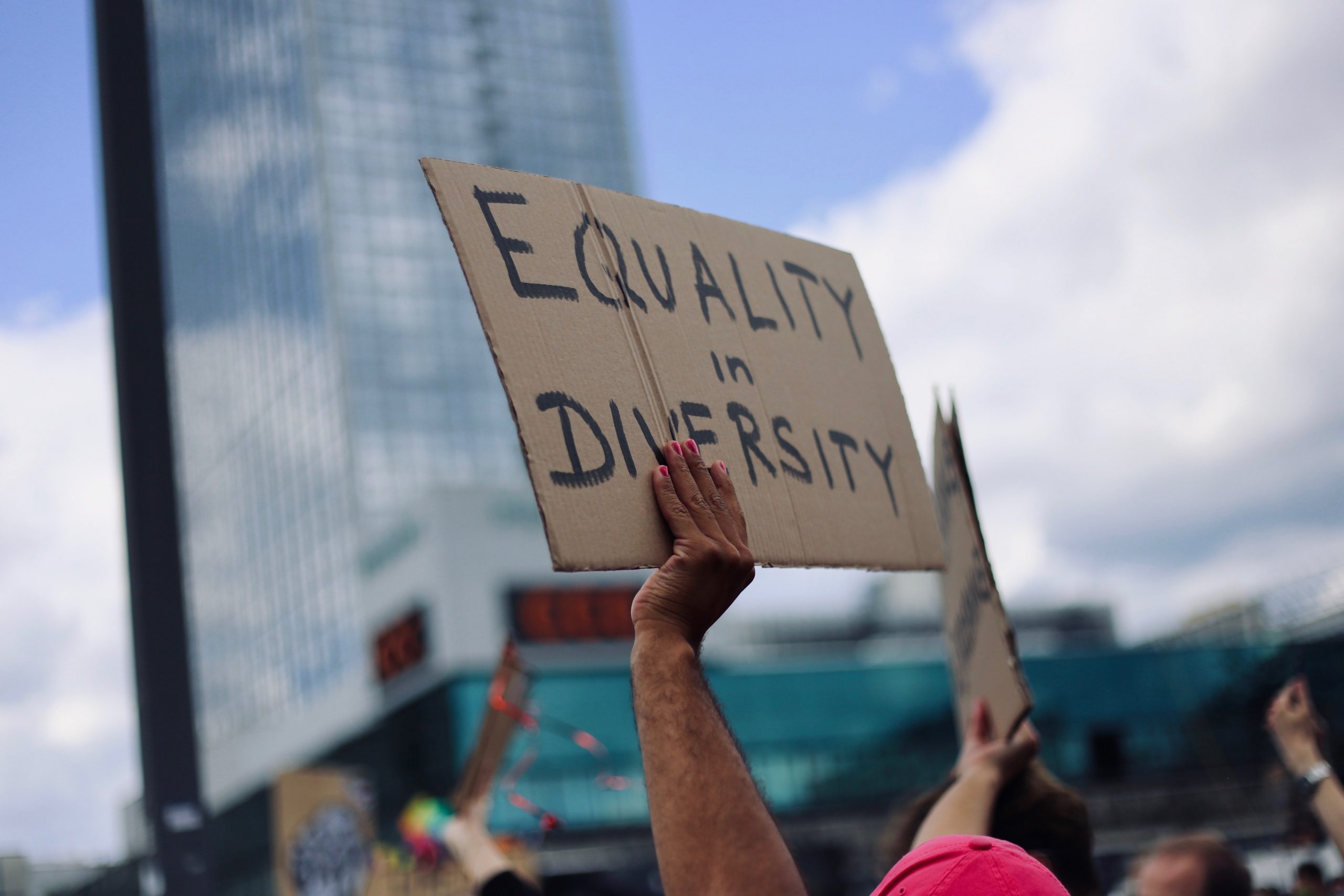Diversity in the workplace is essential for driving innovation, improving decision-making, and creating a more inclusive culture. Research shows it also improves the bottom line. However, many industries have traditionally struggled with diversity, particularly in leadership and technical roles.
While much progress has been made in technology or emerging sectors such as renewable energy, there is still much work to be done. Women, people of color and those with disabilities are underrepresented in leadership positions in all industries and organizations. Some sectors, particularly those that are traditionally ‘male-dominated’, such as agriculture, manufacturing, and industrial, suffer from a serious lack of diversity amongst the executive leadership.

Some statistics make for challenging reading:
- Globally, 30% of manufacturing employees are women, yet only 2.7% of manufacturing companies are led by women. They are an even greater rarity in heavy manufacturing, at only 1.3%
- There are 1.3 billion people globally living with some form of disability, which is 17% of the population, the largest minority group worldwide. And while 90% of companies claim to prioritize diversity, only 4% of businesses consider disability in those initiatives
- The proportion of women in leadership roles within financial services firms is only 24%, and 83% of financial advisors in the US are white.
Researchers such as Richard Florida and Katherine W. Phillips have established that diversity makes us smarter, more creative, and gives companies a competitive edge over their peers. Although individual companies are slowly moving the dial, many traditional industries have missed the mark on large-scale success due to a number of factors.
A lack of suitable mentors and training, unconscious bias and little to no expansion of recruiting channels have all contributed to the problem. Hiring managers in these industries often rely too heavily on their own networks to fill roles, which are typically limited in diversity. Concurrently, with little historical diversity, there are few role models available to provide guidance, advice and support.
Our focus is on providing strategic input to our CEO and Chief People Officer clients in tackling this issue.
Below are six strategies for finding and attracting diverse talent in non-diverse industries:
Step 1: Overtly Align Organizational Culture and Business Strategy with Search and Recruitment Practices
This is the necessary foundational step, particularly for organizations that struggle to identify diversity hires. The crucial early phase is about refining both the business and cultural need for a diverse workforce, and ensuring both executive and departmental alignment.
Setting an effective and measurable plan for attracting diverse talent is not ‘just a HR problem’. It is important to engage all staff in the conversation, and to canvas ideas and approaches from across the organization. Imperatives for shifting the dial in diversity talent include discussions around the nature of the workforce that will meet the company’s emerging needs, the steps that need to take place, timeframes, what success looks like, and how to evaluate that success.
Following discussion and consultation, the senior leadership team needs to be accountable for a formal diversity and inclusion policy, with clearly defined strategic diversity targets and measures, along with clarity around accountability for delivery.
Step 2: Re-Evaluate Your Search and Recruitment Processes
Once there is a degree of clarity and cohesion around diversity targets and metrics, it’s important for HR leaders to take a look at their current search and recruitment processes. This will include identifying any potential biases that may be preventing diverse candidates from applying or advancing. What are the proactive approaches in place that address the policies? How have these changed, in, say, the past five or six years to recognize different expectations?
An effective analysis could include reviewing and re-writing role descriptions to avoid poor practices. This includes avoiding masculine language, and using more inclusive images and language on your career website.
To what extent is it clear that you welcome a diverse range of candidates, and provide appropriate arrangements and support for candidates with disabilities? To what extent does each role description indicate your approach to diversity and inclusion? For example, one of our university clients has the following statement on all role descriptions used in recruitment at all levels:
Equal Employment Statement
We are committed to all aspects of equal opportunity, diversity and inclusion in the workplace and to providing all staff, students, contractors and visitors with a safe, respectful and rewarding and flexible environment free from all forms of unlawful discrimination, harassment, bullying, vilification and victimization. We make decisions on employment, promotion, and reward based on merit.
Step 3: Increase Your Outreach
There are many ways to increase outreach to source a greater range of diverse candidates, even in industries that sometimes have more narrowly based representations of different groups. For example, in the mining industry, the estimates are that only between 8 and 17% of the sector’s global workforce are women).
Ideas include:
- Utilizing different talent pools: Look for candidates with transferable skills from other industries
- If advertising a position, reach out to a wide variety of job sites to post positions
- Ensuring you have deliberate and supportive return-to-work programs. It can be difficult for women or others who have taken a break from the workforce to re-enter it. Return-to-work programs can be an excellent resource both for attracting candidates and providing some extra support
- Supporting a diversity networking group. Help out by backing initiatives and events, offering exposure to your senior organizational leaders
- At the entry level to the organization, start a diverse internship program. Make sure your program exposes participants to senior executive talent, so they can connect with the firm’s leaders. Follow this up with mentoring programs
- Make a point of being well-connected to leading business and advocacy groups that represent a range of diverse populations
- Consider how you might benefit from collaborations with community refugee or recent migrant groups, whose professional qualifications might not be recognized in your country. We are aware of a major construction company who addressed a shortage of technical talent by attracting engineers whose qualifications were not recognized. They employed them in technical support roles, and then supported them through the process of having their qualifications recognized. It was a ‘win – win’ situation.
Step 4: Practice Inclusive Hiring
Inclusive hiring means that you are actively looking for candidates who might be different from the existing workforce. It means you have mechanisms in place that prevent or minimize recruitment biases, both conscious and unconscious.
Ideas include:
- Broadening your referral pool: ask for referrals from external networking associations and diversity groups
- Reduce unconscious bias by anonymizing resumes. Eliminate unconscious bias by deleting an applicant’s name, gender, age and other personal characteristics
- Use data-driven assessments: ensure an objective set of criteria is used to minimize personal biases. We suggest you check your ‘objective criteria’ with diversity and inclusion experts
- Use behavioral event interview guides: check interview guides to ensure that they are seeking a range of examples that enable candidates to draw broadly on their experiences
- Provide interview coaching: make sure all those involved in bringing new staff into the organization are well trained in how to interview and good decision-making practices.
Step 5: Build a Diverse Hiring Committee and Interview Panel
It’s crucial to have both a diverse hiring committee and interview panel, including people on the committee or panel that reflect a good level of diversity. This can also bring different perspectives and experiences to the table which can help to identify potential biases and ensure that the hiring process is fair and inclusive. This not only helps to ensure that diverse candidates are evaluated fairly, but also helps to create a more inclusive culture within the organization, and offers a holistic candidate experience. In many of our clients today, there is a requirement that all short lists reflect a 40:40:20 balance. That is, at least 40% male, 40% female, and 20% addressing other diversity factors.
Step 6: Measure and Report on Your Progress
Diversifying your workforce is an ongoing process, and it’s important to measure and report on your progress. This could include tracking the diversity of your applicant pool, the diversity of new hires, and the retention rates of diverse employees. This not only holds the organization to account but also helps to identify areas that need improvement. It will also serve as an important communication and reinforcement piece to both employees and the broader stakeholder group (investors, shareholders, suppliers, etc.) regarding your organization’s commitment to diversity and inclusion.
Diversity and Inclusion
We also need to recognize that recruiting diverse talent is just the tip of the iceberg. The real challenge then is the ‘inclusion’ part of ‘diversity and inclusion’. Whilst diversity and inclusion are two different things, they are two sides of the same coin, by which long-term, measurable success in one won’t be achieved without the other.
The ongoing challenge, therefore, is the nature of a welcoming or supportive culture – or the absence of this – that is about the long-term sustainability of diversity and inclusion approaches.









